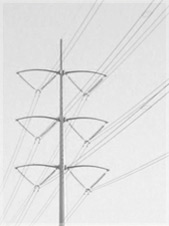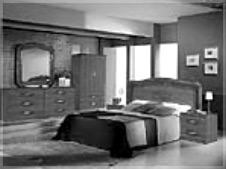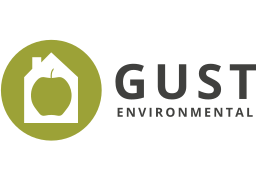Can Your House Affect Your Health?
Healthy House A family in South Carolina moved into a new home. After two years several family members were experiencing continual cold and flu-like symptoms. No treatment ended these problems. Testing showed the home to be contaminated with excessive levels of formaldehyde and 4 PC from the new carpets.
A Mill Valley, California family moved into their newly renovated house. In a short while their young daughter was waking up cross, irritable, and she cried most of the time. The little girl lost her appetite and became lethargic. A growth was discovered in her colon. A neighbor was measuring magnetic fields with his new meter and discovered an 80 milliGauss magnetic field at the child’s bed and in the play yard. The child was moved to another room. An expert located and fixed wiring and plumbing problems. The child slowly recovered over the next several months.
Sick Building Syndrome
Within the last ten years the term ‘sick building syndrome’ has become part of our language. An estimated 35 to 45 million Americans may suffer from symptoms associated with this syndrome1. According to the EPA, indoor air is estimated to be 6 to 10 times more contaminated than outside.
Sick buildings became a reality when the amount of outside fresh air brought into a structure by the ventilation system and outside air leakage was reduced to save energy. This heightened a pollution problem that has been getting increasingly severe with the use of more synthetic building materials, furnishings, and chemically modified natural materials. Many of these materials give off chemical gases for years after installation. For example plywood and chipboard can outgas significant formaldehyde for many years after installation.
Physical symptoms observed to be caused by chemical pollution and often by electrical pollution can be, but are not limited to: headaches, dizziness, colds, flu, sore throat, sinusitis, fatigue, insomnia, depression, memory fogging, irritability, inability to concentrate, and allergies. Sensitivity to these pollutants differs between people. Unfortunately, for many people, such afflictions have become a way of life.
Additionally, Building and plumbing water leaks and other failures to control moisture sources can cause excess interior moisture. This can result in a relative humidity frequently over 60%. This is a condition that favors growth of mold and mildew and the production of allergens that become health issues with continual exposure.
The Health Effects Of Electromagnetic Radiation (EMR)
 Electromagnetic Radiation (EMR) The US government and the utilities have done their best to allay fears over magnetic fields. However, a Swedish epidemiological study2 has raised the issues more strongly than ever. This residential study included 436,503 people who had lived for at least a year within a thousand feet of 220,000 and 400,000-volt transmission lines. The study looked at all types of childhood cancer. Children exposed to fields of more than one milliGauss had twice the risk; Children exposed to more than two milliGauss had almost three times the risk; and children exposed to over three milliGauss had four times the risk of cancer development.
Electromagnetic Radiation (EMR) The US government and the utilities have done their best to allay fears over magnetic fields. However, a Swedish epidemiological study2 has raised the issues more strongly than ever. This residential study included 436,503 people who had lived for at least a year within a thousand feet of 220,000 and 400,000-volt transmission lines. The study looked at all types of childhood cancer. Children exposed to fields of more than one milliGauss had twice the risk; Children exposed to more than two milliGauss had almost three times the risk; and children exposed to over three milliGauss had four times the risk of cancer development.
Findings for adults exposed to magnetic fields over two milliGauss showed a 70% increased risk of developing acute and chronic myeloid leukemia compared to adults exposed to less than one milliGauss.
“Sweden’s National Board for Industrial and Technical Development announced the same day that from now on it ‘will act on the assumption that there is a connection between exposure to power frequency magnetic fields and cancer, in particular childhood cancer'”.3
A study of 30,000 Ontario Hydro workers by the University of Toronto4 concluded that the little studied electric field was far more important in increasing cancer risk than was the often-studied magnetic field. Worker exposure to an elevated electric field had an four-fold increased cancer risk. While exposure to both electric and magnetic field increased risk eleven times over low exposure groups.
Electromagnetic Radiation In Any Home
 Electromagnetic Radiation Home The wiring and appliances in the home produce both Magnetic and Electric fields (often termed EMR or EMF). Magnetic fields excess of one to two milliGauss are often found in homes even when they are not near a power line. Magnetic fields can be produced by errors in wiring, plumbing, and by the TV, computer, refrigerator, oven, stove, stereo, clocks and a waterbed heater. Electric blankets have magnetic fields over 70,000 times the average background level!
Electromagnetic Radiation Home The wiring and appliances in the home produce both Magnetic and Electric fields (often termed EMR or EMF). Magnetic fields excess of one to two milliGauss are often found in homes even when they are not near a power line. Magnetic fields can be produced by errors in wiring, plumbing, and by the TV, computer, refrigerator, oven, stove, stereo, clocks and a waterbed heater. Electric blankets have magnetic fields over 70,000 times the average background level!
As revealed by the Ontario Hydro Study sited above, electric fields are far more important than magnetic fields generating cancers. In addition, scientific observation in Germany over the last 25 years and more recently in the U.S. confirms that Electric fields cause immediate stress to the body particularly when sleeping. This stress can be manifested as inability to respond to doctor’s treatment, aggravated allergies, insomnia, fitful sleep, night sweats, muscle cramps and strains, heart flutters, waking up tired, irritability, and bed wetting in children5. Note there is no specific ‘electric’ disease, there are many possible reactions.
Measurements of the voltage induced by the electric fields on the bodies of people in bed range up to 8000 milliVolts with 2000 milliVolts being common (a milliVolts is 1/1000 volt). In my experience, all normal middle class American bedrooms have a body voltage environment above 1000 milliVolts.
These voltages should be compared to the operating voltage of natural body processes. A pace maker stimulates the heart with one milliVolts. An electrocardiogram measures the electrical processes of the heart in the milliVolts range. An electro-encephalogram measures brain activity in the microvolt range (a microvolt is one millionth of a volt). A nerve cell recognizes an electrical stimulus above 15 to 20 milliVolts.
Body Stress Producers And Health
 Body Stress Producers Various scientific findings show that the human being during his regenerative, passive sleep time is 10 to 100 times less resistant to external stimuli (stresses). His immune system, his adaptation capacity, and his vegetative process functions on a very low level while sleeping6. External stresses do not seem to have the same negative effect during the day when the body’s defense systems are fully operational.
Body Stress Producers Various scientific findings show that the human being during his regenerative, passive sleep time is 10 to 100 times less resistant to external stimuli (stresses). His immune system, his adaptation capacity, and his vegetative process functions on a very low level while sleeping6. External stresses do not seem to have the same negative effect during the day when the body’s defense systems are fully operational.
Stress on the body can be increased by a number of factors including, but not limited to emotional issues, water quality, food quality, electromagnetic fields, polluted air, disturbed earth magnetic field zones in the bed, mold and mildew toxins, noise, room electro-climate, magnetized bed frames/springs and magnetized steel building components. Increased stress on the body at night seems to interfere with the natural healing processes and could extend the length of existing illness or turn a healthy body into a sick one.
“A … yardstick of the quality of sleep is the quality of awakening. Am I relaxed in the morning? Do I get up relaxed? Has sleep been a short vacation? Or am I dead beat? Do I need two cups of coffee and a shower to be really awake? After an overstressed night I will be tired regardless of how long I have slept”6.
The Building Biologist
 Building Biologist Building biology was developed in Germany in the 1970’s and is defined as the science of holistic interactions between human beings and their living environments.
Building Biologist Building biology was developed in Germany in the 1970’s and is defined as the science of holistic interactions between human beings and their living environments.
The science of Building Biology was brought to the US in 1984 by a German architect Helmut Ziehe. Ziehe established the International Institute for Building Biology and Ecology, Inc. (IBE), a non-profit organization headquartered in Clearwater, FL. IBE education involves the study of the impact of building environments upon the health of people. Building Biologists are also trained to assess homes and offices for their potential impact on human health, and to recommend corrective actions.
The Building biologist uses an extensive three step procedure of Detection, Correctional Planning, and Consultation to determine what pollutants exist, the source of the pollution, and recommend means to create a healthier environment.
Detection begins with occupant interviews to look for correlations between physical conditions and dwelling problems and determine areas for specific focus during inspection. Inspection of the dwelling is done using visual methods and high tech measuring devices. These devices include the Fluke 87 field and body voltage meter, the Teslatronics tri-axial magnetic field meter, the Rad-Alert radiation detector, the Tiff 8800A combustion gas detector, and the GigaHertz Solutions Cell phone radiation meter. Building biologists place a high importance on measurement sensitivity since many people react to pollutants at levels far lower than those generally considered to be safe.
The Building biologist can check for toxic gases, lead paint, water condition, biological contaminates, excess moisture, ventilation, heating and air conditioning issues, electromagnetic fields, radiation, pesticides, and radon. Particular attention is paid to the bedrooms with the intention of creating a healthy, healing sleeping environment. If found useful for detecting problems, additional laboratory tests will be recommended.
Correctional Planning involves finding the sources of the identified pollutants and determining the best way to reduce or eliminate the source.
Consultation involves explaining the results of the inspection and testing, recommending an action plan to deal with the sources of pollution, and, if desired, working with your contractors to implement the plan. Findings are provided in a written report with detailed explanation of the elements evaluated and the specific findings.
1 Stress From Current and Radiation, W. Maes Lecture, World Research Foundation Congress, Oct 5-7, 1990, Los Angeles, CA.
2 Cancer At Slater School, The New Yorker, Dec 7, 1992, and Danger Overhead, Time, October 26, 1992
3 Swedish Officials Acknowledge EMF-Cancer Connection, Microwave News, Vol XII, No. 5, Sept/Oct 1992.
4 July 10, 1996 media release by the University of Toronto from Michelle Nobel 416-978-5949
5 Cost Avoidance and Productivity in Owning and Operating Buildings, James E. Woods, Occupational Medicine, Vol. 4, 1989.
6 Same as 5


